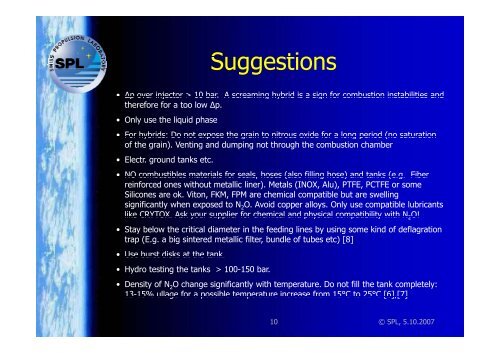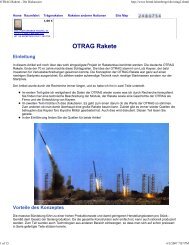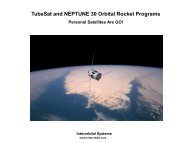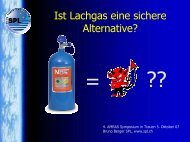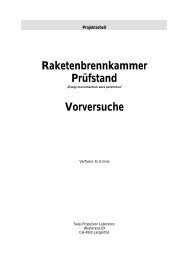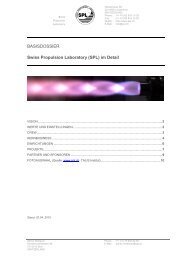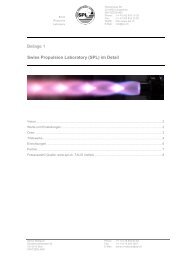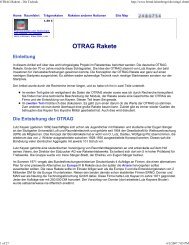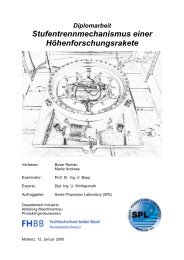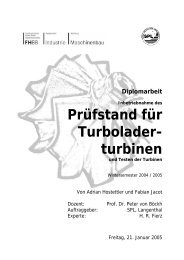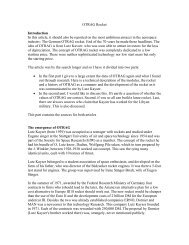Is nitrous oxide safe? - Swiss Propulsion Laboratory
Is nitrous oxide safe? - Swiss Propulsion Laboratory
Is nitrous oxide safe? - Swiss Propulsion Laboratory
- No tags were found...
Create successful ePaper yourself
Turn your PDF publications into a flip-book with our unique Google optimized e-Paper software.
Suggestions• Δp over injector > 10 bar. A screaming hybrid is a sign for combustion instabilities andtherefore for a too low Δp.• Only use the liquid phase• For hybrids: Do not expose the grain to <strong>nitrous</strong> <strong>oxide</strong> for a long period (no saturationof the grain). Venting and dumping not through the combustion chamber• Electr. ground tanks etc.• NO combustibles materials for seals, hoses (also filling hose) and tanks (e.g. Fiberreinforced ones without metallic liner). Metals (INOX, Alu), PTFE, PCTFE or someSilicones are ok. Viton, FKM, FPM are chemical compatible but are swellingsignificantly when exposed to N 2 O. Avoid copper alloys. Only use compatible lubricantslike CRYTOX. Ask your supplier for chemical and physical compatibility with N 2 O!• Stay below the critical diameter in the feeding lines by using some kind of deflagrationtrap (E.g. a big sintered metallic filter, bundle of tubes etc) [8]• Use burst disks at the tank.• Hydro testing the tanks > 100-150 bar.• Density of N 2 O change significantly with temperature. Do not fill the tank completely:13-15% 15% ullage for a possible temperature increase from 15°C to25°C [6],[7]10 © SPL, 5.10.2007


